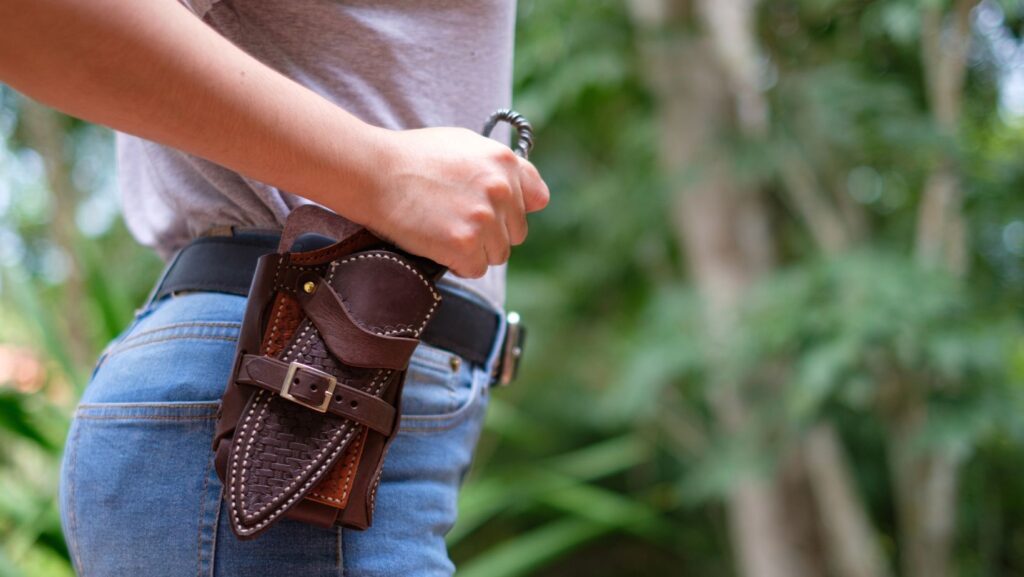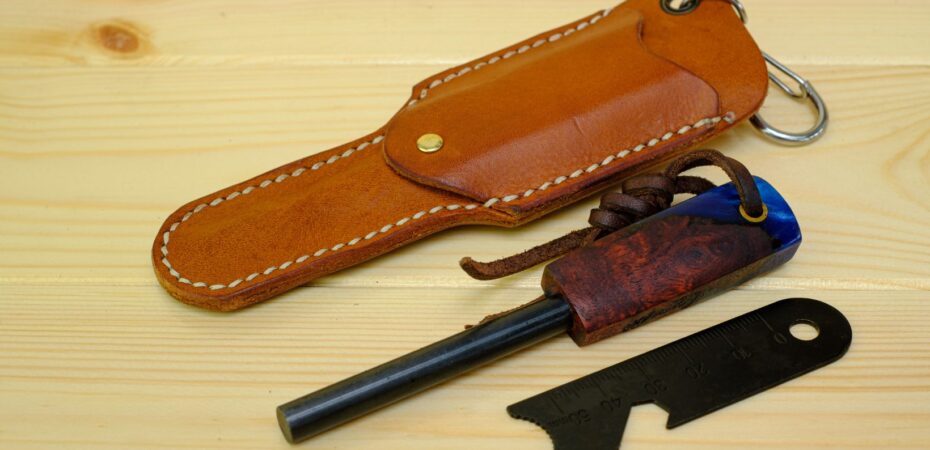When it comes to carrying a firearm safely and effectively, selecting the best OWB holster can make all the difference between a comfortable, secure carry experience and one that leaves you frustrated and potentially compromised. Outside the waistband holsters offer unique advantages for both concealed and open carry situations, but finding the right match for your needs requires careful consideration of multiple factors.
Unlike inside the waistband alternatives, OWB holsters sit outside your pants, providing easier access and often better comfort for extended wear. Whether you’re a law enforcement professional, competitive shooter, or civilian carrier, understanding what makes an OWB holster effective will help you make an informed decision that serves you well for years to come.
Understanding OWB Holster Fundamentals
Outside the waistband holsters attach to your belt and hold your firearm against your hip or back. This positioning offers several distinct advantages over other carry methods. You’ll find that OWB holsters typically provide faster draw times, better weight distribution, and reduced printing compared to pocket or ankle carry options.
The key to finding the best OWB holster lies in understanding how these holsters interact with your body, clothing, and daily activities. Your holster becomes an extension of your firearm, and choosing poorly can compromise both safety and effectiveness.
Most quality OWB holsters feature adjustable cant (the angle at which your firearm sits) and ride height (how high or low the holster sits on your belt). These adjustments allow you to customize the holster’s position for optimal concealment, comfort, and draw stroke.
Material Considerations That Matter
The material of your OWB holster directly impacts durability, retention, and comfort. Each material type offers distinct advantages and trade-offs that align with different carrying preferences and use cases.
Leather holsters represent the traditional choice, offering natural comfort that improves with age. High-quality leather molds to your firearm over time, creating a custom fit. However, leather requires more maintenance and can be affected by moisture. Full-grain leather provides the best durability, while top-grain leather offers a good balance of quality and affordability.
Kydex holsters have gained popularity for their consistent retention and weather resistance. This thermoplastic material maintains its shape regardless of temperature or humidity, ensuring reliable performance in all conditions. Kydex holsters typically feature audible retention clicks, giving you confidence that your firearm is secure. They’re also easier to clean and maintain than leather alternatives.
Hybrid holsters combine leather backing with Kydex or polymer shells, attempting to merge the comfort of leather with the retention of synthetic materials. These designs often excel in comfort but may sacrifice some durability or retention consistency.
Nylon holsters offer an economical entry point but generally provide less retention and durability than leather or Kydex options. While suitable for occasional use, they’re rarely considered among the elite owb holster choices for serious applications.
Achieving Proper Fit and Retention
A properly fitted holster should accommodate your specific firearm model exactly. Generic “one size fits multiple guns” holsters rarely provide adequate retention or protection. Your holster should cover the trigger guard completely while allowing smooth presentation of the firearm.
Retention mechanisms vary significantly between holster types. Passive retention relies on friction and material tension to secure your firearm. This approach works well for concealed carry where quick access matters most. Active retention systems use thumb breaks, retention straps, or mechanical locks that require deliberate action to release the firearm.
For duty or tactical applications, active retention often provides necessary security, especially during physical confrontations. However, these systems require additional training to operate effectively under stress. The best OWB holster for your needs balances security with accessibility based on your specific requirements.
Testing retention involves checking that your firearm stays secure during normal movement while remaining drawable with deliberate action. Your holster should hold the firearm securely when inverted but release smoothly during your practiced draw stroke.
Comfort Factors for Extended Wear
Comfort becomes critical when wearing your holster for hours at a time. Several design elements influence long-term wearability, starting with the holster’s contact points against your body.
The holster’s cant angle significantly affects comfort and concealment. A forward cant (15-20 degrees) typically provides better concealment and more natural draw angles, while straight or reverse cant might work better for specific body types or carry positions.
Ride height determines where the holster sits relative to your belt line. Higher positioning often conceals better but may print more when bending over. Lower positioning reduces printing but can make the draw stroke longer and potentially more awkward.
Belt attachment systems vary from simple belt loops to adjustable clips and paddle attachments. The best OWB holster uses sturdy attachment hardware that distributes weight evenly across your belt. Weak attachment points create hot spots and can lead to holster failure at critical moments.
Consider how the holster interacts with your typical clothing. A holster that works perfectly with heavyweight jeans might prove problematic with lighter dress pants or athletic wear.
Performance Across Different Use Cases
Different carrying scenarios demand different holster characteristics. Understanding these requirements helps narrow your search for the best OWB holster for your primary use case.
Concealed carry applications prioritize concealment without sacrificing reasonable access speed. Look for holsters with rounded edges, minimal bulk, and adjustable cant. The holster should disappear under your cover garment while remaining accessible when needed.
Open carry situations allow for larger holsters with enhanced retention features. Since concealment isn’t a concern, you can prioritize security, durability, and quick access. Active retention systems make more sense in open carry scenarios where others might attempt to grab your firearm.
Range and training use demands holsters that can withstand repeated drawing and holstering without wearing out. Competition holsters often feature minimal retention to maximize speed, while tactical training holsters need to survive rough handling and environmental conditions.
Professional duty carry requires holsters that meet specific departmental standards while providing reliable performance under extreme conditions. These holsters typically feature multiple retention levels and are designed to prevent weapon takeaways.
Essential Features to Evaluate
When evaluating potential holsters, several features separate quality options from inferior alternatives. Trigger guard coverage stands as the most critical safety feature – your holster must completely cover the trigger and guard area to prevent accidental discharges.
Sweat guards protect both your firearm and your body. A proper sweat guard extends high enough to prevent skin contact with sharp firearm edges while protecting the gun from corrosion-causing moisture. Some carriers prefer minimal sweat guards for reduced bulk, while others prioritize maximum protection.
Sight channels ensure your front sight doesn’t catch during holstering. This feature becomes especially important with tall or sharp sights that might snag on poorly designed holster mouths. The best OWB holster accommodates your sights without requiring modification.
Adjustability allows fine-tuning of cant, ride height, and retention to match your preferences. While some carriers prefer simple, non-adjustable designs for their reliability, most benefit from some degree of customization capability.
Testing and Maintenance Best Practices
Before trusting any holster for carry purposes, conduct thorough testing to ensure it meets your needs and safety standards. Start with unloaded firearms and gradually work up to live-fire exercises only after confirming safe operation.
Test retention by checking that your unloaded firearm remains secure during normal activities like walking, sitting, and bending over. The holster should retain the firearm when inverted but allow smooth drawing with proper technique.
Practice your draw stroke extensively with the unloaded firearm to develop muscle memory and identify any potential snag points or awkward motions. The holster should allow consistent, repeatable presentation without requiring unusual body movements.
Maintenance requirements vary significantly between materials. Leather holsters need periodic conditioning to prevent cracking and maintain flexibility. Clean them with appropriate leather cleaners and apply conditioner as recommended by the manufacturer.

Kydex holsters require minimal maintenance but should be inspected regularly for cracks or wear points that might affect retention or safety. Clean them with mild soap and water, avoiding harsh chemicals that might damage the material.
Making Your Final Selection
Choosing the best OWB holster ultimately depends on your specific needs, preferences, and intended use. Start by clearly defining your requirements: Will you carry concealed or open? How many hours per day will you wear the holster? What’s your experience level with firearms?
Consider trying holsters from friends or at local gun stores before making a purchase. Many holster manufacturers offer trial periods or satisfaction guarantees that allow you to test their products with your actual carry gun.
Remember that the most expensive holster isn’t necessarily the best choice for your situation. Focus on finding a holster that meets your specific requirements reliably rather than chasing premium features you won’t use.
Quality holsters represent a long-term investment in your safety and carrying effectiveness. A well-chosen OWB holster should serve you reliably for years, making it worth investing in proven designs from reputable manufacturers.
Your holster choice directly impacts your ability to carry safely and effectively. Take the time to research thoroughly, test carefully, and choose wisely – your safety and peace of mind depend on making the right selection.


 By
By 




